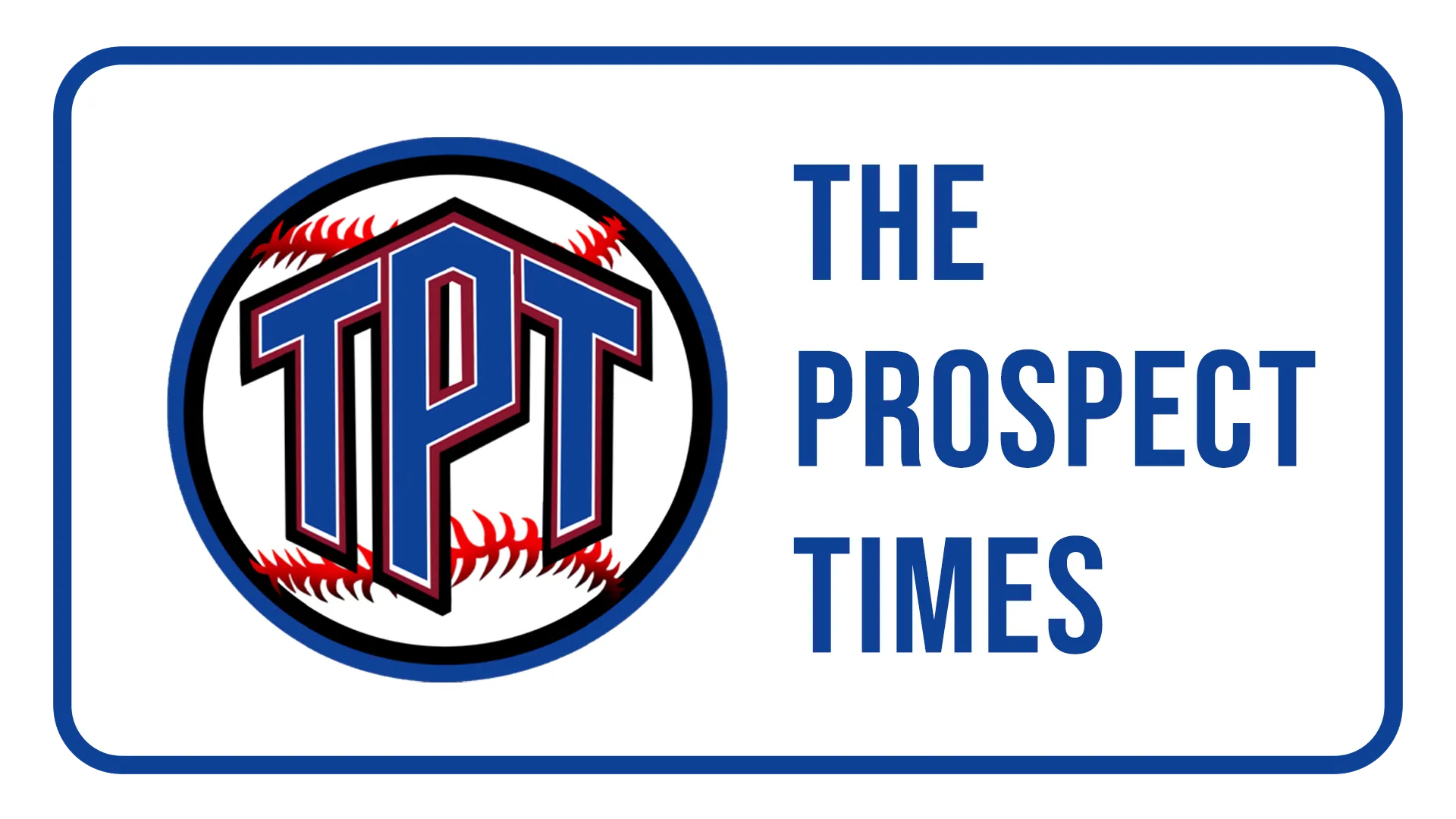Rangers picks from round 4-20 of the MLB Draft recap
Texas Rangers 2025 Draft recap from Day 2.

Day 2 of the 2025 MLB draft started 10:30 and the Rangers had 17 picks to make through the day.
(All scouting reports are from Baseball America and from some information I found as well as stats I found).
**Round 4- Mason McConnaughey**: a 6-foot-3, 220-pound righthander who pitched one season with Cloud County (Kan.) JC before transferring to Nebraska. He made just three starts as the team’s Friday night starter during his 2025 junior season before an arm injury ended his season. When healthy, he has shown a fastball in the low 90s that will get up to 95 mph and a two-seam variation that has solid running life. His primary breaking ball is a short, tight gyro slider in the low 80s that has consistently run a strong whiff rate. He will also mix in a mid-80s changeup perhaps his best pitch has significant tail fading life. McConnaughey’s injury recovery clouds his outlook, but he was trending in the right direction and looked like a future pro starter on the strength of his solid three-pitch mix and strike-throwing, with a chance for more if he could improve his breaking ball.
Round 5- Ben Abeldt: Abeldt has been a high-usage reliever since the day he stepped on campus at TCU and led the team in appearances as a freshman in 2023 and as a sophomore in 2024. Between the two seasons, he owns a 2.81 ERA in 99.1 innings with a 29.5% strikeout rate and a 9.4% walk rate. Entering the 2025 season he was expected to be one of the most exciting relievers in the country, but he suffered a partially torn UCL in February and had Tommy John surgery that kept him out the entire season. When healthy the 6-foot-3, 215-pound lefty attacked hitters from a long, loose arm action and nearly sidearm slot that makes him a nightmare in left-on-left matchups with an extreme crossfire landing that adds even more deception. He sits in the 91-94 mph range and has touched 96 with tons of armside run that leads to a lot of groundball contact. Abeldt’s 78-82 mph slider is a sweeping pitch that he has shown some ability to manipulate and looked like an above-average offering. He also has a low-80s changeup. Abeldt pitched with Team USA in both the 2023 and 2024 summers and served as TCU’s director of bullpen operations while rehabbing from TJ in 2025. Also has a similar slingy delivery to Chris Sale.
Round 6- Jack Wheeler: Wheeler is a 6-foot-5, 205-pound righthanded hitter and pitcher with solid upside on both sides of the ball. He has a fastball that has been into the low 90s, but because his breaking ball is pretty far off, it does seem like most scouts prefer him as a hitter. He has a chance to develop plus raw power with a loose swing and plenty of physical projection, though he is a raw hitter who will need to make strides with his approach. He’s a third baseman now, but between his actions and size there’s a chance he ultimately slides over to right field where his strong throwing arm could be a nice asset.
Round 7- Paxton Kling: Someone who played with him in high school told me he is a great dude and leader, and a mega competitor. Kling ranked as a top-five-rounds talent coming out of high school in 2022, but withdrew from the class in order to reach campus at LSU. In Baton Rouge, Kling struggled to make an impact with his bat and, after going unselected as a draft-eligible sophomore in 2024, transferred back to his home state of Pennsylvania to play his junior year with Penn State. That proved to be a great move, as Kling settled into the everyday center field job at the top of the lineup and had his best offensive season. He slashed .358/.470/.632 with 13 home runs and 15 stolen bases with a 16.7% strikeout rate that was significantly better than the 24-26% rate he managed with LSU. Kling creates solid leverage and power with his 6-foot-2, 210-pound frame and has solid bat speed and some power to all fields. His contact skills are still questionable and he often gets fooled on spin. In addition to his offensive strides, Kling continues to stand out for his athleticism and supplemental tool set more than his hitting ability. He’s a plus runner who can chase the ball down well in center field and is a good baserunner, with above-average arm strength that should allow him to play all three outfield positions if necessary. His tools and athleticism fit in the first 10 rounds, but exactly where he goes will depend on a team’s confidence in the strides he can continue to make as a hitter.
Round 8- Evan Siary: After being deployed primarily as a reliever in his first two seasons at Mississippi State, Siary this spring was used primarily as a starter and pitched to a 4.00 ERA with 72 strikeouts to 15 walks across 54 innings. He has a funky, drop-and-drive delivery and attacks from an outlier five-foot-four release height. Siary’s fastball sits in the low-90s, but his bread-and-butter pitches are his secondaries. His low-to-mid-70s curveball flashes both depth and bite, while his mid-to-high-80s slider is the better of the two and flashes sharp, late glove side life. Siary rounds out his arsenal with a mid-to-high-80s changeup that flashes above-average with both some fade and late tumble. With above-average control and a deep arsenal, Siary looks the part of a professional starter.
Round 9- Owen Proksch: Proksch is a 6-foot-3, 225-pound lefthander and Texas native who pitched out of Duke’s bullpen as a freshman and sophomore. His performance spiked in 2025, where he worked his way into a rotation role and became one of the Blue Devils’ most reliable arms. Proksch finished with a career-best 31.4% strikeout rate and 9.7% walk rate. He throws a three-pitch mix that includes an 89-91 mph fastball that touches 94, a sweeping slider around 80 mph and a low-80s changeup he uses far less frequently. Proksch has some deception in his delivery with a crossfire landing and a low three-quarters slot. It helped him generate impressive miss rates on all of his offerings in 2025, and he landed his fastball-slider combination for strikes at a consistent clip. He’ll need the changeup to come along—or the addition of something new—to survive as a starter in pro ball, but Proksch is trending in the right direction at the right time.
Round 10- J.D. McReynolds: McReynolds is a 6-foot-4, 210-pound senior righthander who has been a lockdown reliever for Division-II Central Missouri for three seasons. He owns a career 1.78 ERA over 121.2 innings and this spring posted a 1.41 ERA in a career-high 57.1 innings with 95 strikeouts and 19 walks. His performance is better than his stuff, but he does offer some deception with a long arm action and low release. McReynolds sits around 90 mph with his fastball and touches 92, but he’s gotten plenty of whiffs with it, which is also true of his upper-70s changeup (his primary secondary) and upper-70s slider.
Round 11- Jacob Johnson: Johnson is a lanky righthander with a 6-foot-3, 165-pound frame who posted a 1.62 ERA over 14 starts and 66.2 innings with Pearl River (Miss.) JC in 2025. Arm is loose and Quick, and he is a strike thrower. He will run it up to 96 and will hold 91-94 into the 4th inning and beyond. His fastball has sink and has considerable arm-side tail action. Pitched into the 7th inning on multiple occasions this spring. His mid 80s slider has tunneling traits and has late sharp diving action. He gets lots of whiffs, will need to develop a change-up.
Round 12- Jake Barbee: 6-foot-3 right-handed pitcher who has maxed out his fastball at 94 with 2400 RPMs. His curveball sits 79-81, his slider sits 82-85, and his change up sits at 85.
Round 13- Aiden Robertson: Robertson is a small and skinny righthander with solid stuff and big performance as a sophomore with Walters State (Tenn.) JC. The 6-foot-1, 185-pound righty led Walters State—and all Division I juco pitchers—with 130 strikeouts this spring, and posted a 4.12 ERA in 18 starts and 89.2 innings. He throws strikes from a lower slot and features a long and deep arm action with a three-pitch mix. Robertson’s low-90s fastball got up to 95 mph early in the season, but his velocity was inconsistent throughout the spring and late in the year was more consistently in the 89-92 mph range. It’s a sinking fastball that should create plenty of weak groundball contact. Robertson flashes two solid secondaries with a sweeping slider in the upper 70s and low 80s, as well as a low-80s changeup that falls off the table with great diving life at its best. He tends to slow his arm down on his changeup, which will be something to monitor at the next level. Teams that covet low release point pitchers could be intrigued with Robertson in the 7-10 round range, but he’s also committed to Virginia Tech where he could bolster his stock with continued performance and more strength gains.
Round 14- Landon Manzi: 6-foot-3 righty with major projection. He has a fast arm with a 4 pitch mix. Manzi has a bat missing shape fastball from a low release and currently tops out in the low 90s but is likely to add velo. He also has a sweeper, slurve, and a change-up in his pitch repertoire. The Rangers seen him on 6 or 7 occasions.
Round 15- Luke Hanson: In three seasons at Virginia Hanson hit .278 with 10 HRs, 67 RBIs, and 15 SBs. He had a career .927 FPCT while at Virginia.
Round 16- Jaxon Grossman: A 6-foot-4 right-handed pitcher from Salt Lake community college. He posted a 5.15 ERA this year with 50 and 2/3 innings pitched with 55 strikeouts and a .228 opponents batting average. He started 9 games in 2025.
Round 17- Noah Franklin: The South Carolina native spent three years at West Ashley High School in Charleston, SC, before spending his senior season with TNXL Academy in Ocnee, Florida. During his time at West Ashley, Franklin was teammates with the Gamecocks’ rising sophomore pitcher Zach Russell. At TNXL Academy, Franklin hit .388 with a 1.194 OPS that included seven home runs and 11 doubles. He also drew 12 walks and 24 hit by pitches en route to the NAA National Championship, where he earned MVP.
Round 18- Julius Sanchez: A 6 foot right-handed pitcher. He started 3 games this year and didn’t pitch again, so it looks like he got injured. He gave up 8 ER in 16 innings while striking out 17 hitters. Opponents hit .250 against him this year. Let’s see what he has when he comes back from injury if he signs.
Round 19- Cory Geinzer: A 6-foot-4 right-handed pitcher from college of Central Florida. He had 16 appearances this year and started 1 game. Cory posted a 5.29 ERA this year in 34 innings, he also struck out 44 hitters which is good for a 11.26 K/9. Walks do seem to be a little bit of an issue, Cory had 28 walks in 34 innings.
Round 20- Jay McQueen: McQueen is a 6-foot-2, 185-pound outfielder with a backwards profile—he hits righthanded but throws lefthanded—and offers a solid blend of tools and hitting ingredients to get excited about. He has a clean righthanded swing and doesn’t swing and miss often, with an approach that allows him to draw plenty of walks and spit on pitches out of the zone. On top of that, McQueen has above-average power potential thanks to a strong frame with plenty of room to add more mass in the future. He’s a center fielder who has the instincts to potentially stick there, though he’s more of a fringy runner who might slow down as he develops. If and when McQueen does move to a corner, he has the tools to be an above-average defender, and his above-average arm could allow him to profile in right field. McQueen is committed to South Alabama but has the offensive upside to fit in the top 10 rounds out of high school.
Share this article
Written by

